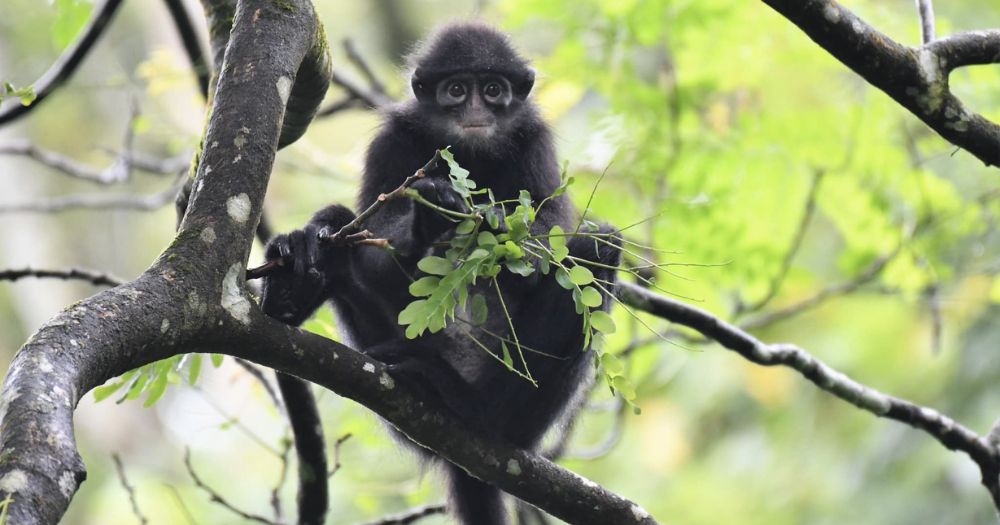A recent study on Raffles’ banded langurs in Singapore has an optimistic outlook on its population in the near future.
Population to double
Based on the study's model, the local langur population is projected to double in the next 15 years, from 75 individuals to over 150 individuals.
Additionally, it estimated that there is zero chance that the species will go extinct.
The study also predicted that the population would reach 244 by 2071 with the current population growth rates.
Published last month, the study was jointly conducted by primatologists from Singapore and the Oxford Brookes University in the United Kingdom.
Past research predicted extinction
Raffles banded langurs are one of the rarest and most threatened primate species globally.
They were named after Sir Stamford Raffles, who noted the species as new to science in 1822.
The highly arboreal species is characterised by its black fur and white bands on the chest and inner legs.
The first ever study looking at the viability of the langur's population in Singapore was conduced in 1995 after a loss of habitat caused a sharp drop in numbers.
In 1990, it was estimated that there were 10 to 14 individuals.
The 1995 study suggested that Raffles' banded langurs were likely to go extinct by 2035 due to habitat loss and fragmentation.
As of 2021, 68 individuals remain, up from approximately 40 in 2010.
Management measures helped population grow
Primatologist Andie Ang, head of primate conservation and Singapore programmes at Mandai Nature, said that the growth in the langurs' population has been "inspiring".
The results demonstrate that a species can be brought back from the "brink of extinction" with the right protection and management measures in place, she added.
Ang, who is also the chairperson of the Raffles’ Banded Langur Working Group, stressed that the work needed to facilitate this progress "demand steadfast dedication in the field, strong partner collaborations and adequate financial support."
Managed and funded by Mandai Nature, the Raffles' Banded Langur Working Group was started in 2016.
The group has been spearheading a Species Action Plan which has improved habitat protection, population research and public awareness for the langurs.
It also conducts field research to understand the population's distribution, ecology and behaviour -- all of which is used in their work with agencies, researchers and the community to improve the langurs habitats.
Greatest threat is habitat loss
While the results are encouraging, the study suggested that even a slight increase in deaths within the population could lead to a reduction in population size within the next 50 years.
The greatest threat to the population is the loss of unprotected habitat, the study identified.
Moreover, it noted that the issue of inbreeding is not yet apparent but should be monitored in the future.
The paper's lead author Amy Woolloff also cautioned that the langurs remain vulnerable to deaths from roadkill and unpredictable events like diseases and extreme weather.
Four individuals, or about five percent of the local population, died from collisions with road vehicles between 2017 and 2023.
Improvements made to habitat
Enhancement of connectivity between forest fragments in their existing habitat was recognised as the most effective short-term management strategy, the study fround.
Group director of conservation at the National Parks Board (NParks) Lim Liang Jim said the agency has been working to improve the langurs’ habitats through reforestation and enrichment plantings.
NParks is one of several partners of the Raffles' Banded Langur Working Group.
Improvements works include the planting of food plant species in Thomson Nature Park and the planting of tree species with spreading canopies to enhance linkages in the canopy.
NParks also installed rope bridges along Old Upper Thomson Road, which separates the nature park from Central Catchment Nature Reserve, to further facilitate the safe movement of the langurs.
Raffles banded langurs in Singapore
Top images by Andie Ang.

If you like what you read, follow us on Facebook, Instagram, Twitter and Telegram to get the latest updates.



